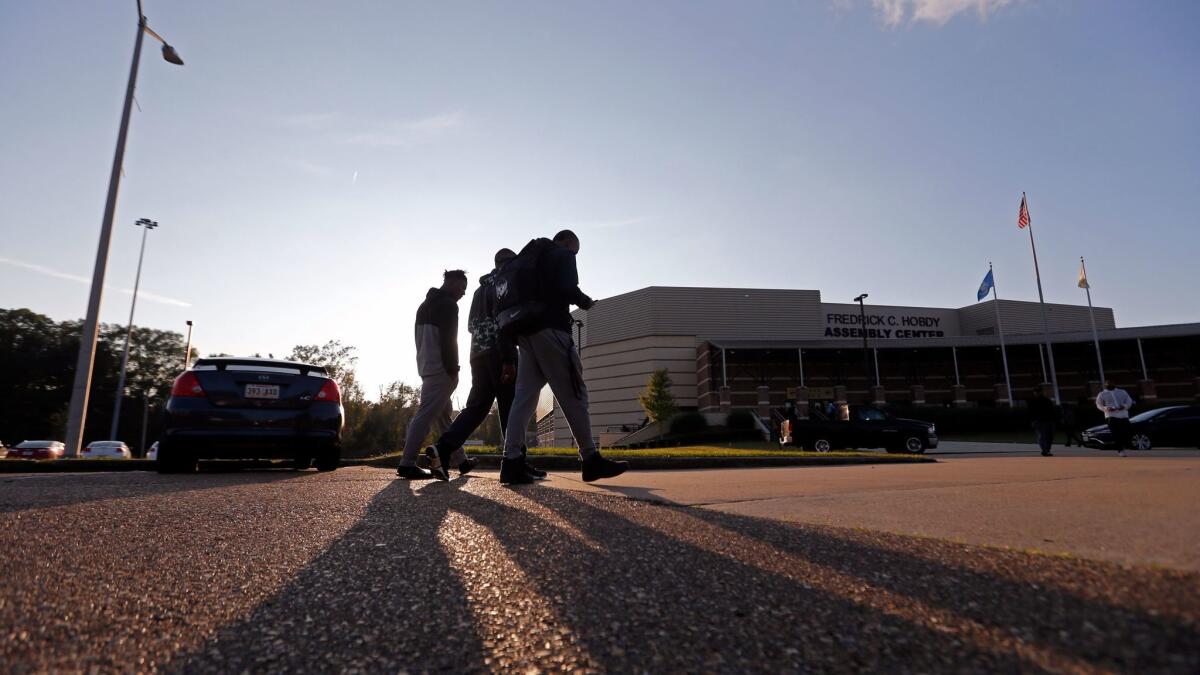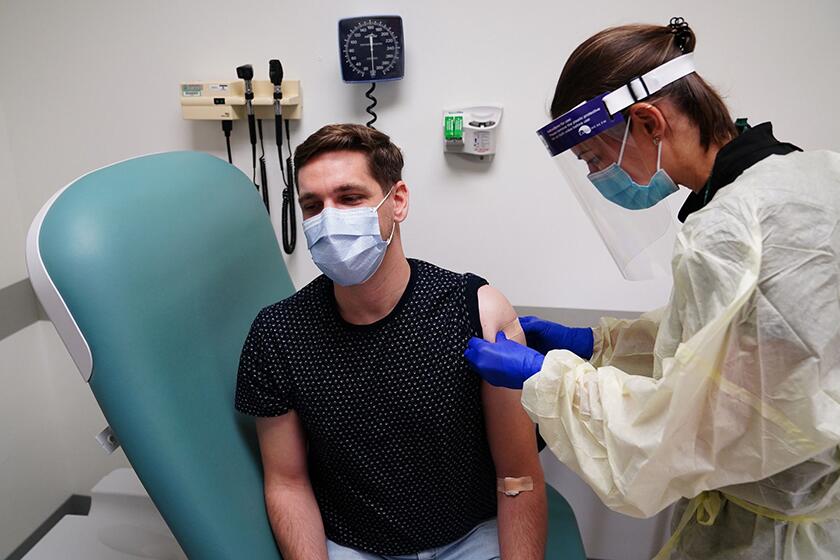Op-Ed: The real meaning behind high loan default rates among black students — another kind of college mismatch

- Share via
As high school seniors head into the holiday season — also known less festively as college application time — they need to devote as much effort to calculating the debt they’ll take on as they do perfecting their admission essays. The data show that a lot of kids don’t know what they are getting into when they take out a student loan. And for certain groups of kids the problem is a lot worse.
According to two analyses based on numbers released from the Department of Education last month, almost half of all black students who took out federal student loans defaulted within 12 years. Robert Kelchen, a professor of higher education at Seton Hall University, conducted one of the studies. He found the default rate of black students (49%) was more than twice that of white students (20%) and more than four times the rate of Asian students (11%). This disparity held true for nonprofit and for-profit colleges and universities.
Among students who ultimately dropped out of college, 65% of black students defaulted compared with 38% of white students. And among those who earned degrees there was also a disparity, with 23% of black students defaulting compared with 6% of white students.
Kelchen doesn’t speculate as to the cause of these disparities, but the authors of a second report from the Center for American Progress do. “Seeing even African American students who earned a bachelor’s degree struggle [to pay back loans] reinforces that we cannot pretend the federal student loan program exists in a vacuum,” wrote Ben Miller, the senior director for postsecondary education at the center and a former Education Department official during the Obama administration. “The median African American household has just $1,700 in accumulated wealth. Racial discrimination in hiring has not improved over the past quarter-century.”
A lot of kids don’t know what they are getting into when they take out a student loan. And for certain groups of kids the problem is a lot worse.
Michael Lomax, who is the president of the United Negro College Fund, tweeted: “We must improve federal financial aid policies to help low-income & AA students earn degrees with less debt & repay loans w/less red tape.” In the past, he has encouraged colleges to try to hold their costs down, but mostly he has advocated for the federal government to simply give grants rather than loans to more students.
Now Lomax is suggesting that there should be fewer restrictions — less red tape — on how much debt students can take on. But the evidence of default would indicate that this is exactly the wrong approach. Rather than making it easier to get loans, students have to be impressed with the risks they are taking when they sign up to borrow money.
Instead of weighing the costs and benefits of higher ed, students appear to be caught up in a mad rush to enroll at any price. High schools, colleges and society in general relentlessly push students toward an associate’s or bachelor’s degree program. But given the racial achievement gap in high school, it would be surprising if black students were prepared for college at the same rate that white students are.
According to a 2016 study from Eric Hanushek of Stanford University, the average 12th-grade black student placed in the 19th percentile for math achievement. In reading, the average black student scored in the 22nd percentile. This is barely an improvement from the numbers 50 years earlier.
Yet, black college enrollment has grown significantly, according to data from the National Center for Education Statistics. From 1994 to 2013, it rose from 11% to 16% at schools that primarily grant associate’s degrees, and from 11% to 14% at schools that offer bachelor’s, master’s and doctoral degrees. In 20 years, blacks grew from being underrepresented to overrepresented in college, all while their readiness for college barely budged.
If we presume that everyone who takes out a student loan has similar intentions with regard to its repayment, then the default rate represents the gap between people’s confidence that they will earn enough money to pay it back and their actual ability to do so. We seem to be assuring black students in this regard and ignoring the data.
It doesn’t help that black students tend to get degrees in less well-paying fields. The recent default rate analyses don’t break down their findings by major. But a 2016 study from the Georgetown Center on Education and the Workforce found that black students are less likely to pursue lucrative majors than their white peers. Blacks account for 8% of general engineering majors, 7% of mathematics majors, and only 5% of computer engineering majors, the study said, while. in lower-paying fields like human services and community organization (20%) and social work (19%), they are overrepresented.
Colleges that are eager to boost their student bodies’ racial diversity will often admit students who are less qualified — this is the “mismatch problem” that scholars like UCLA’s Richard Sander have documented — and then steer them into easier and lower-paying fields in order to boost graduation rates. In other words, it is not racial discrimination but affirmative action policies that may be to blame for this sad state of affairs.
As Miller notes: “Sending African American students into an inequitable adulthood with large debts from college can put them even further behind.” The answer is not letting students borrow more money or lowering interest rates or forgiving debt. It’s being honest with them about what kind of higher education they are prepared for, which degrees earn the most money and what a college education is really worth.
Naomi Schaefer Riley is a senior fellow at the Independent Women’s Forum.
Follow the Opinion section on Twitter @latimesopinion and Facebook
More to Read
A cure for the common opinion
Get thought-provoking perspectives with our weekly newsletter.
You may occasionally receive promotional content from the Los Angeles Times.









